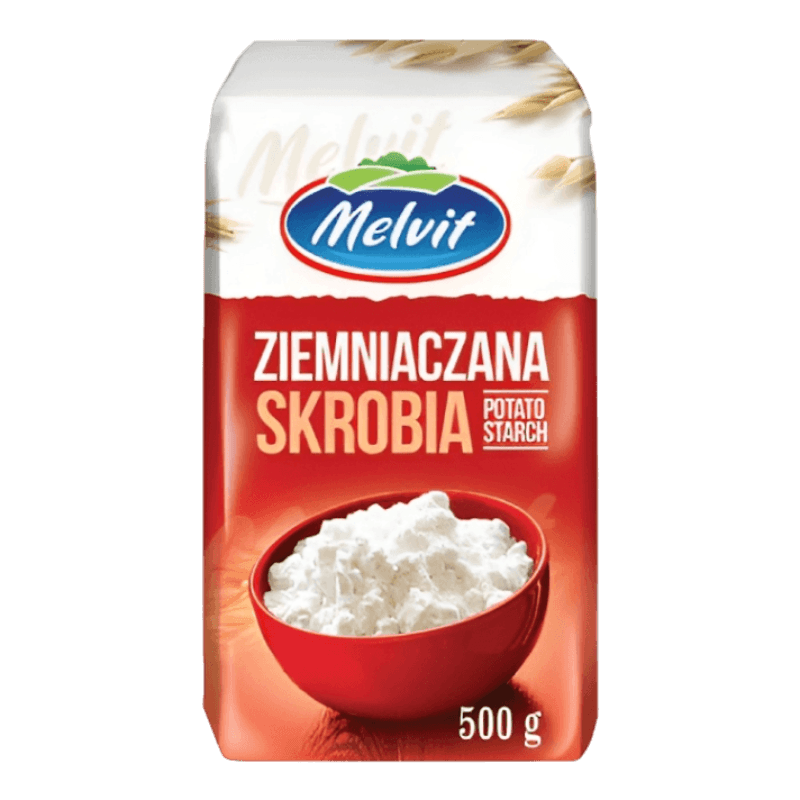Are you wondering how to store potato flour properly to maintain its freshness and flavor? You’re not alone.
As a versatile ingredient, potato flour is a staple in many kitchens, offering a unique texture and taste to your favorite recipes. However, improper storage can lead to spoilage, wasted money, and disappointing meals. Imagine opening your pantry to find your potato flour clumped, stale, or even infested with pests.
It’s not a pleasant scenario, right? In this guide, you’ll discover simple yet effective tips to keep your potato flour fresh and ready to use. Stick around to learn how a few easy steps can save you time, money, and ensure that your culinary creations always turn out just right.

Credit: www.foodcraft.hk
Ideal Storage Conditions
Potato flour is versatile and popular in kitchens worldwide. To preserve its quality, proper storage is crucial. Understanding ideal storage conditions helps maintain its flavor and texture. Keeping potato flour fresh ensures delicious recipes every time.
Temperature Control
Store potato flour in a cool place. Avoid direct sunlight or heat sources. Heat can spoil the flour quickly. A pantry or cupboard works well.
Moisture Protection
Moisture is the enemy of dry ingredients. Use airtight containers for storage. This keeps the flour dry and fresh. Moisture can lead to clumping and spoilage.
Light Exposure
Light can degrade potato flour. Store it in a dark place. Use opaque containers if possible. This protects the flour from light exposure.
Container Choice
Choose containers carefully. Glass or plastic works best. Ensure they have tight-fitting lids. Proper sealing keeps air out.
Location
A pantry or cabinet is ideal. Avoid storing near heat sources. Keep away from windows and ovens. This maintains optimal conditions.

Credit: pierogistore.com
Choosing The Right Container
Storing potato flour properly ensures its freshness and longevity. Choosing the right container plays a crucial role in maintaining its quality. The container must protect the flour from moisture, light, and air. This guide helps you select the best container for your potato flour storage needs.
Airtight Containers
An airtight container is essential to keep potato flour fresh. It prevents moisture and air from spoiling the flour. Choose a container with a secure lid that seals tightly. This type of container helps maintain the flour’s texture and flavor.
Opaque Containers
Light can degrade potato flour over time. Using an opaque container blocks light exposure. This keeps the flour’s nutrients intact. Choose containers made from materials that do not allow light penetration.
Glass Vs. Plastic Containers
Both glass and plastic containers can store potato flour effectively. Glass containers are non-reactive and do not absorb odors. They are also easy to clean. Plastic containers are lightweight and durable. Ensure the plastic is food-grade and BPA-free.
Size And Shape Considerations
Consider the size and shape of the container based on your storage space. Tall and slender containers save space and fit easily in cupboards. Ensure the container holds enough flour for your needs. Avoid containers that are too large, which may trap excess air.
Labeling Your Container
Label the container with the date of storage. This helps track the flour’s freshness. Clear labels prevent confusion with other similar-looking flours. Use a permanent marker or a label maker for clarity.
Preventing Moisture And Contamination
Store potato flour in an airtight container in a cool, dry place to prevent moisture. Keep it away from direct sunlight to avoid contamination.
Storing potato flour properly is crucial to maintaining its quality and extending its shelf life. One of the biggest threats to potato flour is moisture and contamination. If you’ve ever opened a bag of flour only to find it clumpy or worse, infested, you know the importance of proper storage. Let’s dive into some practical ways to keep your potato flour safe and fresh.
Using Airtight Containers
Airtight containers are your best friend when it comes to storing potato flour. They prevent moisture from seeping in, which can turn your flour into an unusable paste. Consider using glass jars or sturdy plastic containers with a good seal.
Keeping It Cool And Dry
Temperature and humidity levels play a significant role in the longevity of your potato flour. Store it in a cool, dry place like a pantry or cupboard. Avoid areas near the stove or a window where heat and sunlight can raise the temperature and humidity.
Avoiding Cross-contamination
Contamination can ruin your entire batch of flour. Use clean, dry utensils every time you scoop out flour. Have you ever accidentally mixed flours and ended up with a culinary disaster? Keeping your flours separate and clearly labeled can prevent that confusion.
Regularly Checking For Signs Of Moisture
It’s not just about storing; it’s also about maintaining. Regularly check your potato flour for signs of moisture or mold. If you find any, it’s time to toss it out. This small habit can save your recipes and your health.
Using Desiccants For Extra Protection
Adding desiccant packets in your flour container can provide extra protection against moisture. These packets absorb excess humidity, ensuring your flour stays dry. Have you ever thought about using simple household items for a task like this? By implementing these storage tips, you can keep your potato flour fresh and ready for your next cooking adventure. How do you currently store your potato flour, and could any of these tips improve your method?

Credit: store.edwardandsons.com
Extending Shelf Life
Storing potato flour properly extends its shelf life. Keep it in an airtight container, away from moisture. A cool, dark place like a pantry ensures freshness.
Storing potato flour properly is essential for maintaining its freshness and extending its shelf life. You wouldn’t want to open your pantry and find your flour has gone bad, right? By following a few simple steps, you can ensure that your potato flour stays fresh and ready to use for all your culinary adventures.
Use Airtight Containers
Transferring potato flour to an airtight container is a game-changer. When you leave it in its original packaging, air and moisture can sneak in, reducing its quality. An airtight container keeps out unwanted moisture and pests, ensuring your flour stays fresh longer.
Store In A Cool, Dry Place
The pantry is often the best spot for storing potato flour. Keep it away from heat sources like the stove or direct sunlight, which can cause the flour to spoil faster. Consistent room temperature helps maintain the quality of the flour.
Consider Refrigeration
If you live in a humid climate, consider storing potato flour in the fridge. It adds an extra layer of protection against moisture. Just remember to bring it to room temperature before using it, as the cold can affect its texture.
Label And Date
Labeling your container with the purchase date can help you keep track of freshness. It’s easy to forget when you bought something, especially if it’s a pantry staple. This simple step ensures you use your flour while it’s at its best.
Buy In Small Batches
If you don’t use potato flour often, buying smaller quantities can be more practical. This reduces the chance of it going stale before you can use it up. It’s always better to restock than to waste expired flour.
Check For Freshness
Before using, always give your potato flour a quick check. Smell it to ensure there’s no off odor, and look for any signs of clumping or pests. This habit helps avoid unpleasant surprises in your cooking. Have you ever found that a simple change made a huge difference in how long your food lasted? By taking these small steps, you can significantly extend the shelf life of your potato flour, making your cooking experience more enjoyable and economical.
Frequently Asked Questions
How To Preserve Potato Flour?
Store potato flour in an airtight container in a cool, dry place. Keep it away from sunlight and moisture. Use within six months for best quality. Regularly check for clumping or odor. Avoid storing near strong-smelling foods. Proper storage ensures freshness and flavor retention.
How Long Can You Keep Potato Flour?
Store potato flour in an airtight container in a cool, dry place. It lasts 6 to 12 months. Check for any changes in color or smell before use. Proper storage ensures freshness and extends shelf life.
Is It Better To Store Flour In Glass Or Plastic Containers?
Glass containers are better for storing flour. They prevent pests, maintain freshness, and are non-reactive. Glass also allows easy visibility of contents. Ensure containers are airtight to keep flour dry and fresh. Plastic can absorb odors and is less durable over time.
Choose glass for optimal storage.
What’s The Best Way To Store Flour For Long Term?
Store flour in an airtight container, away from moisture and light. Keep it in a cool, dry place. Consider freezing for extended freshness. Use vacuum-sealed bags for long-term storage to prevent pests. Label containers with purchase dates for better inventory management.
Final Words
Storing potato flour right keeps it fresh and usable longer. Use airtight containers. Keep them in a cool, dark place. Avoid moisture and sunlight. This prevents clumping and spoilage. Label your containers for easy identification. Check the flour regularly for freshness.
Smell and texture are key indicators. If it smells bad, discard it. Proper storage saves money and time. It also ensures a better cooking experience. With these tips, your potato flour stays in great condition. Enjoy cooking with it anytime!

Leave a Reply